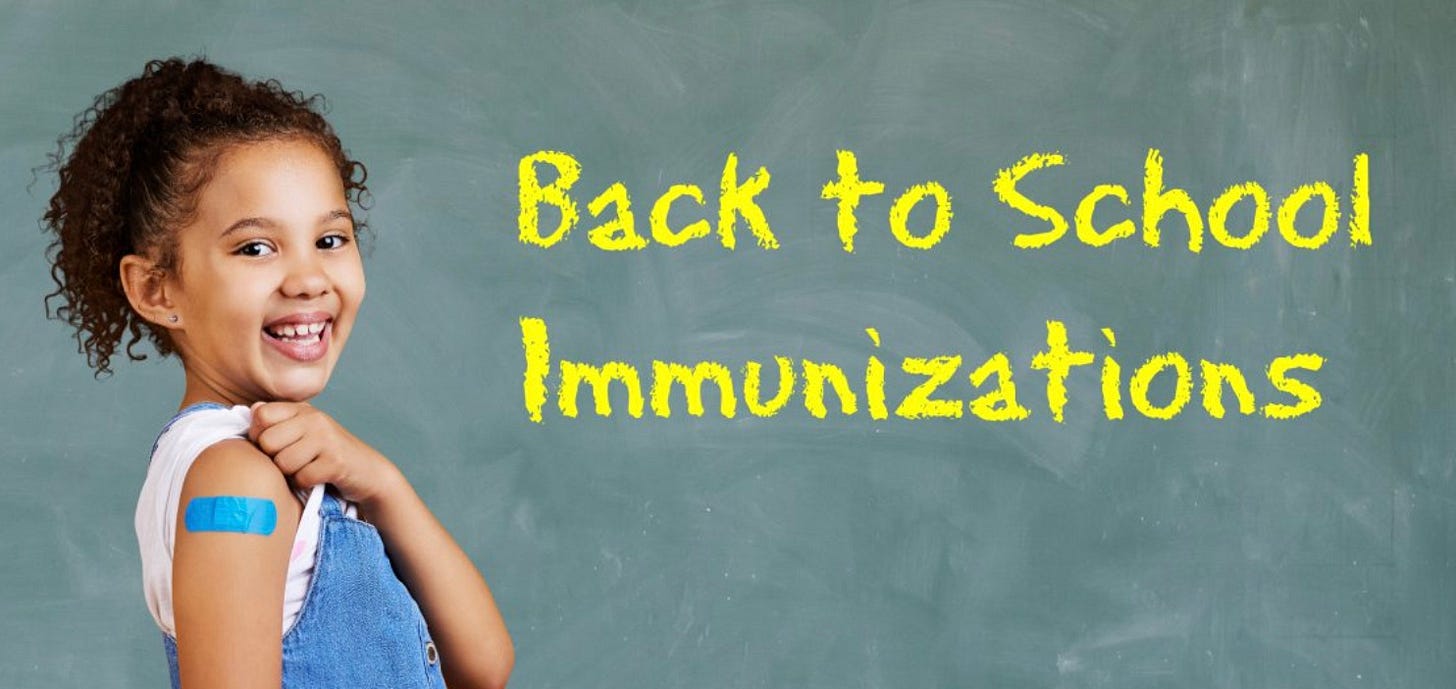Was it a Mistake to Mandate COVID Vaccines?
What seemed obvious at the time might have caused greater harm in the long run
On February 13, 2024, National Geographic Press published a book I wrote called, TELL ME WHEN IT’S OVER: AN INSIDER’S GUIDE TO DECIPHERING COVID MYTHS AND NAVIGATING A POST-PANDEMIC WORLD. During the next few months, I will be writing about issues described in the book. (Links to the original sources are provided throughout this post.)
On February 29, 2020, a man in his 50’s died from pneumonia in Washington State—the first known COVID death in the United States. Between September and December 2020, COVID killed at least 2,000 Americans a day, then 3,000, then 4,000. Hospitals were overwhelmed. The CDC estimated that when intensive care unit occupancy hit 100 percent, which was true in many hospitals, 80,000 excess deaths would follow two weeks later due to decreased quality of care and delays in treatments. To meet the demands of COVID, our hospital, as well as many others, suspended all elective surgeries.
By the end of December 2020, two mRNA vaccines were available to stop a virus that was wildly out of control. At last, a ticket out of this pandemic. One month later, after more than 500,000 Americans had died from COVID, the Biden administration immediately began mass-producing, mass-distributing, and mass-administering vaccines. On the day that President Biden was inaugurated, healthcare workers were vaccinating 1 million Americans every day. One month later, in February 2021, 1.5 million; in March, 2.5 million; in April, 3.5 million. A remarkable accomplishment. Then, in May 2021, after about 70 percent of the United States population had been vaccinated, we hit a wall. About 30 percent of the American public simply refused to get a COVID vaccine, either because they thought the vaccine was unsafe or because they didn’t think COVID was that bad.
In response, we mandated COVID vaccines. We mandated them for travel, schools, restaurants, businesses, and federal employees. We mandated them for entry into churches and synagogues. We mandated them for sporting events; athletes who refused to be vaccinated weren’t allowed to compete. Many people pushed back, claiming personal freedoms and bodily autonomy.
The problem with the personal freedom argument was that there was nothing personal about getting a COVID vaccine. First, people who had been vaccinated shed less infectious virus when they get COVID compared with those who hadn’t been vaccinated. Second, people who had been vaccinated were less likely to transmit the virus to others. Third, about 9 million people in the United States, because they are receiving immune suppressive drugs to treat cancer or other diseases, can’t respond adequately to vaccines. They depend on those around them for protection. Do we bear any responsibility for our neighbors? Fourth, unvaccinated people disproportionally burdened an overwhelmed health care system. In 2021, unvaccinated people were 12 times more likely to be hospitalized than vaccinated people; in 2022, 6 times more likely. Choosing not to get a tetanus vaccine is a personal choice. No one is going to catch tetanus from you. It’s not a contagious disease. But COVID is contagious.
Early in the pandemic, mandates appeared to be the way to go. But there was, as it turned out, an unanticipated price to pay. Some public health officials now question whether vaccine mandates were a mistake. Here’s why. In 2023 alone, 48 states introduced 377 bills many of which addressed the legality of vaccine mandates and argued for more non-medical exemptions. For example, in April 2023, Mississippi allowed a religious exemption to vaccination. A few months later, 1,800 religious exemptions were granted. Prior to this ruling, Mississippi, because it had only offered medical exemptions to vaccines, had the highest vaccination rate in the country and, consequently, one of the lowest rates of vaccine preventable diseases. That won’t last. And Mississippi is just the tip of the iceberg. About 35 percent of parents now question the value of school vaccine mandates for all vaccines. Consequently, vaccine exemptions among school children have increased dramatically. It is not a coincidence that measles cases are how sweeping across the country; 15 states are reporting cases. “The courts are leaving us vulnerable,” said Wendy Parmet, director of Northwestern University’s Center for Health Policy and the Law.
By mandating vaccines during the COVID pandemic, we inadvertently leaned into a libertarian left hook. Consequently, we may be more vulnerable to future pandemics. “One day we’re going to have a really bad global crisis and a pandemic far worse than COVID, and we’ll look to the government to protect us, but it’ll have its hands behind its back and a blindfold on,” said Lawrence Gostin, director of Georgetown University’s O’Neill Institute for National and Global Health Law. “We’ll die with our rights on—we want liberty, but we don’t want protection.”




Dr. Offit, you forgot to mention that the definition of unvaccinated was anybody less than 14 days after their second shot. There’s a lot of definition problems in your article. You’re going along with the definitions that were misleading to begin with. It’s not a vaccine. Its a gene therapy.
The “unvaccinated”: yall wound up conflating those who were having reactions to the injections with people who chose not to take them; proceeding from there to smear the entire fake group. In logic, this would be called a strawman argument.
And of course you ignore the obvious that many of us actually did the research on this and we didn’t want to have synthetic technology injected, produced in a flawed process that left all kinds of garbage in the shots. Let’s just say it, the synthetic injections were not ready, and may never be.
Just here for the comments. 🍿